📺 Media Ethics: Essential Concepts for Reading Comprehension
Media ethics refers to the principles and standards that guide the practice of journalism, broadcasting, and other forms of mass communication. These ethics aim to ensure fairness, accuracy, and accountability while balancing the public’s right to know with respect for individual privacy and societal welfare. RC passages on media ethics often explore topics like censorship, bias, and the ethical dilemmas faced by media professionals. Understanding these concepts equips readers to critically evaluate the role of media in shaping public opinion and fostering transparency.
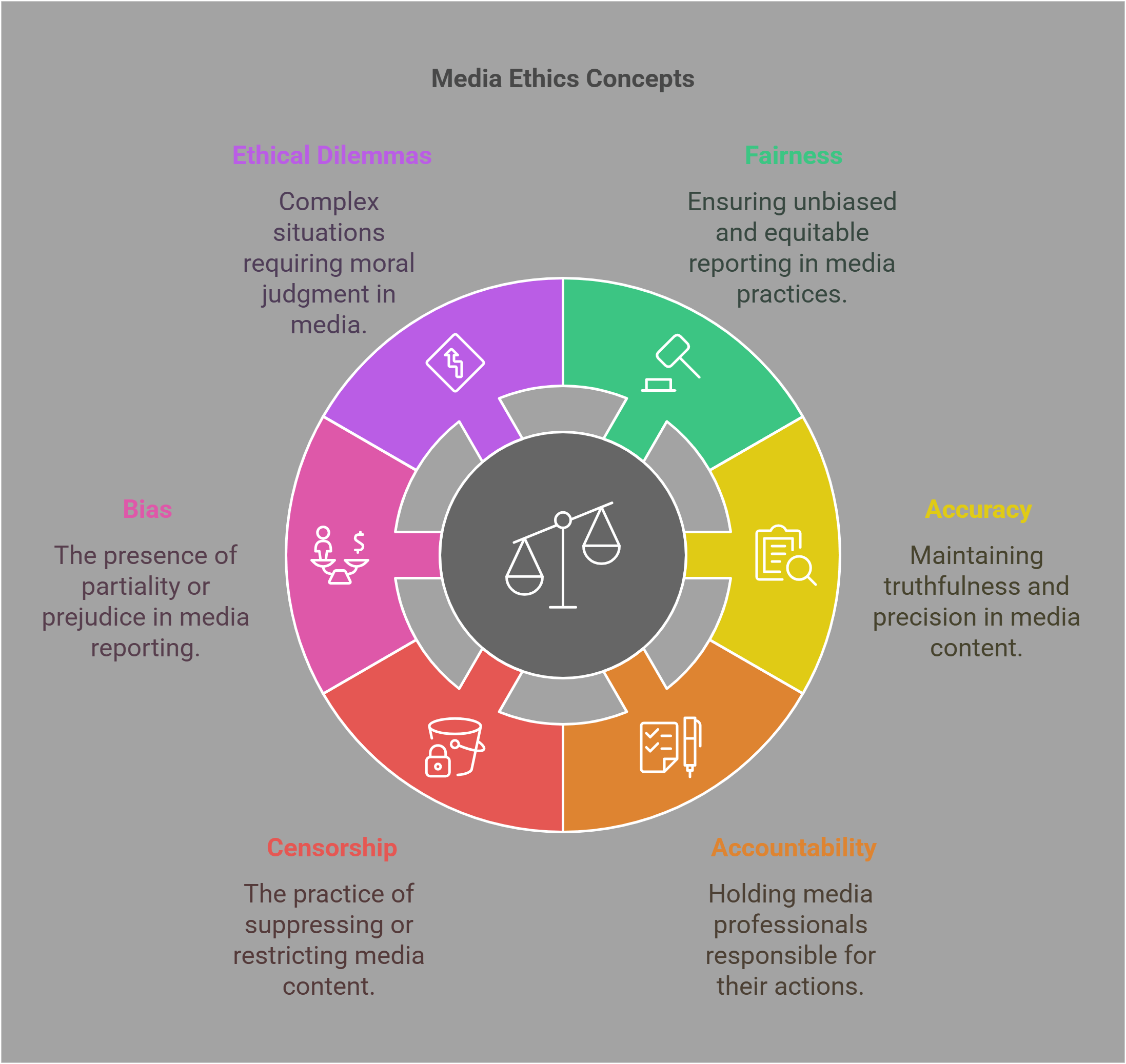
📋 Overview
This guide will explore the following essential media ethics concepts:
- Definition and Scope of Media Ethics
- Principles of Ethical Journalism
- The Role of Objectivity and Fairness
- Challenges of Media Bias
- Privacy vs. Public Interest
- Ethical Advertising Practices
- Digital Media and Ethics
- Censorship and Freedom of the Press
- Ethical Dilemmas in Investigative Journalism
- Media Accountability and Self-Regulation
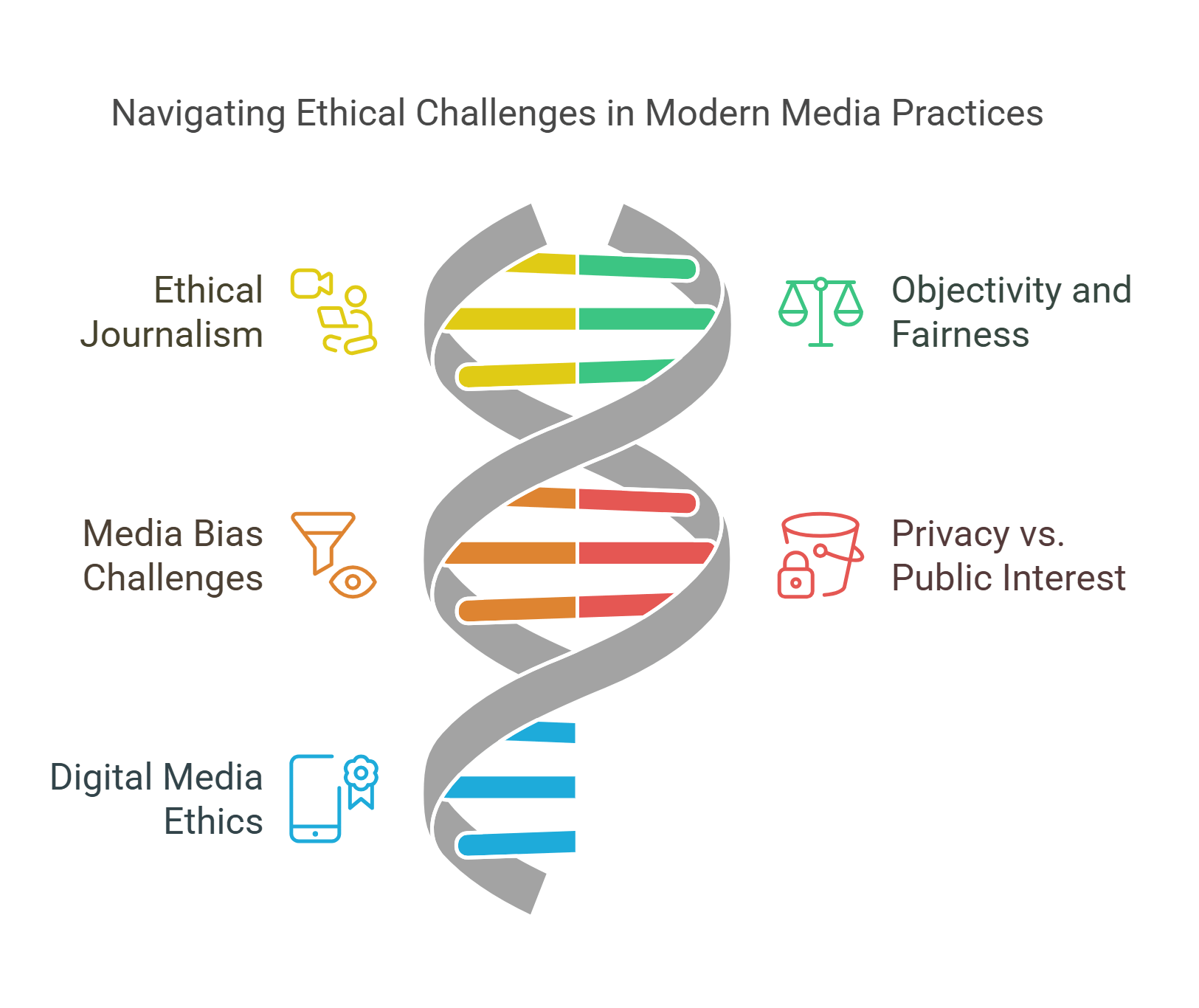
🔍 Detailed Explanations
1. Definition and Scope of Media Ethics
Media ethics refers to the guidelines and moral principles governing the conduct of media professionals. It encompasses various forms of communication, including print, broadcast, and digital media.
- Key Goals:
- Promote truth and transparency.
- Balance freedom of expression with responsibility.
- Protect vulnerable groups and maintain societal harmony.
- Scope:
- Includes issues like misinformation, sensationalism, and ethical reporting.
📘 Example: Ethical journalists verify facts and provide balanced coverage of contentious issues.
Explained Simply: Media ethics is like a compass that ensures media professionals navigate their responsibilities with integrity.
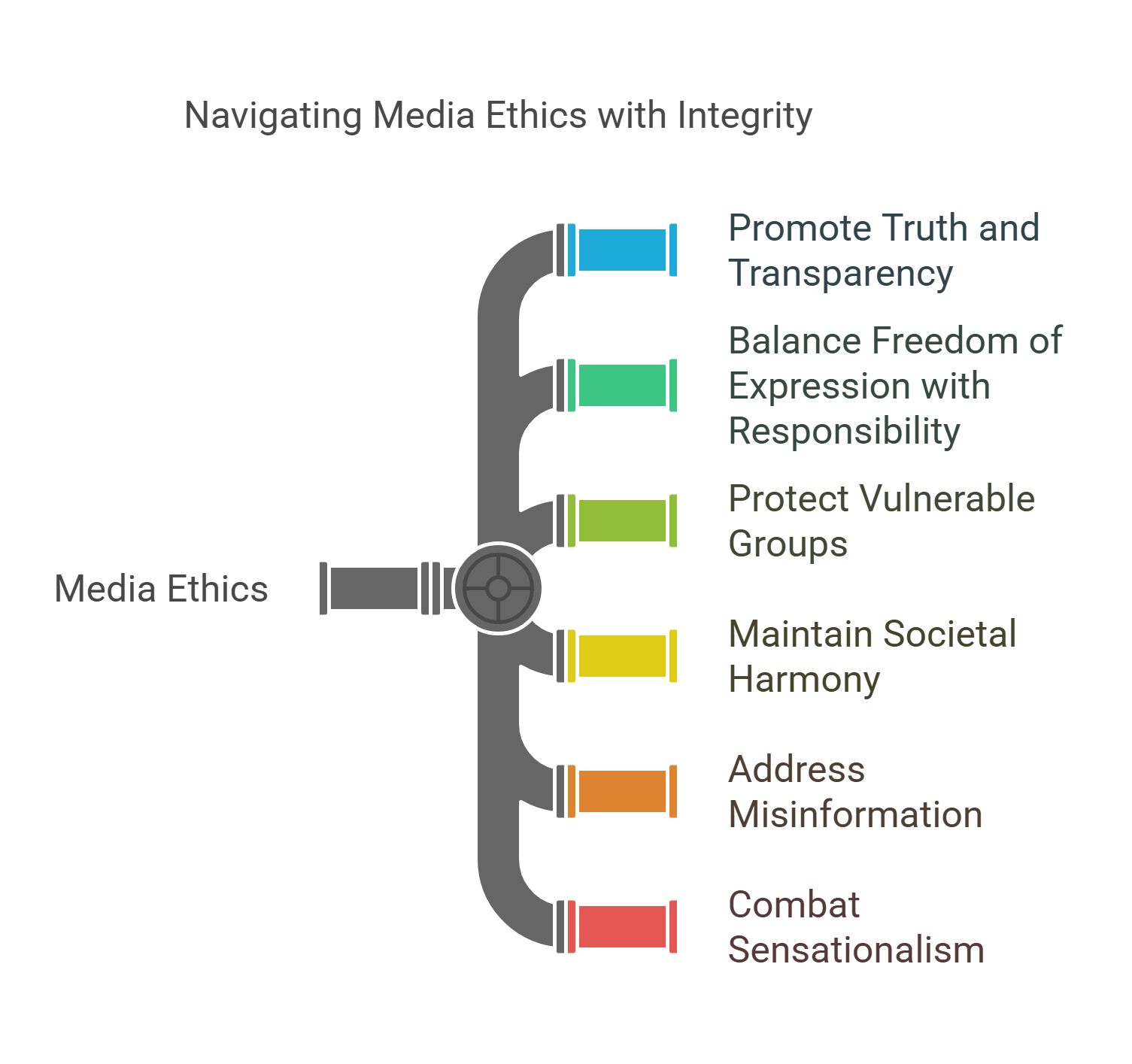
2. Principles of Ethical Journalism
Ethical journalism is guided by principles that prioritize truth, fairness, and accountability. These principles help maintain the credibility of media organizations and trust among audiences.
- Core Principles:
- Accuracy: Reporting facts without distortion or omission.
- Impartiality: Avoiding bias and presenting multiple perspectives.
- Accountability: Admitting and correcting errors transparently.
📘 Example: The Society of Professional Journalists’ (SPJ) Code of Ethics emphasizes minimizing harm and acting independently.
Explained Simply: Ethical journalism is like a set of golden rules that ensure the news is trustworthy and fair.
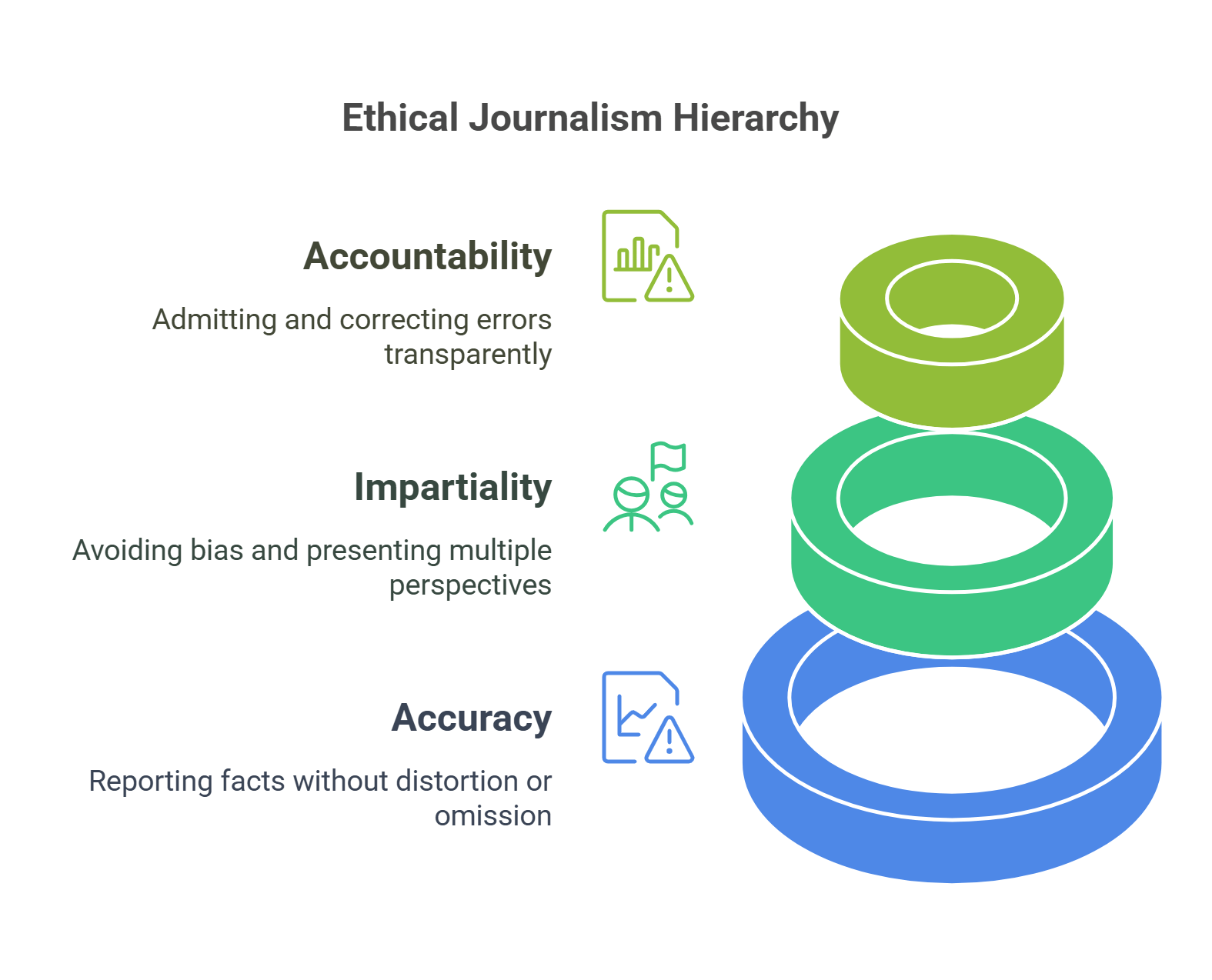
3. The Role of Objectivity and Fairness
Objectivity and fairness are fundamental to ethical media practices. They ensure that information is presented without bias, allowing audiences to form their own opinions.
- Objectivity:
- Reporting facts without personal or organizational influence.
- Avoiding loaded language and speculative assertions.
- Fairness:
- Giving all parties an opportunity to present their viewpoints.
- Contextualizing information to avoid misleading impressions.
📘 Example: Coverage of political events should include perspectives from all major stakeholders.
Explained Simply: Objectivity and fairness are like lenses that provide a clear and balanced view of reality.
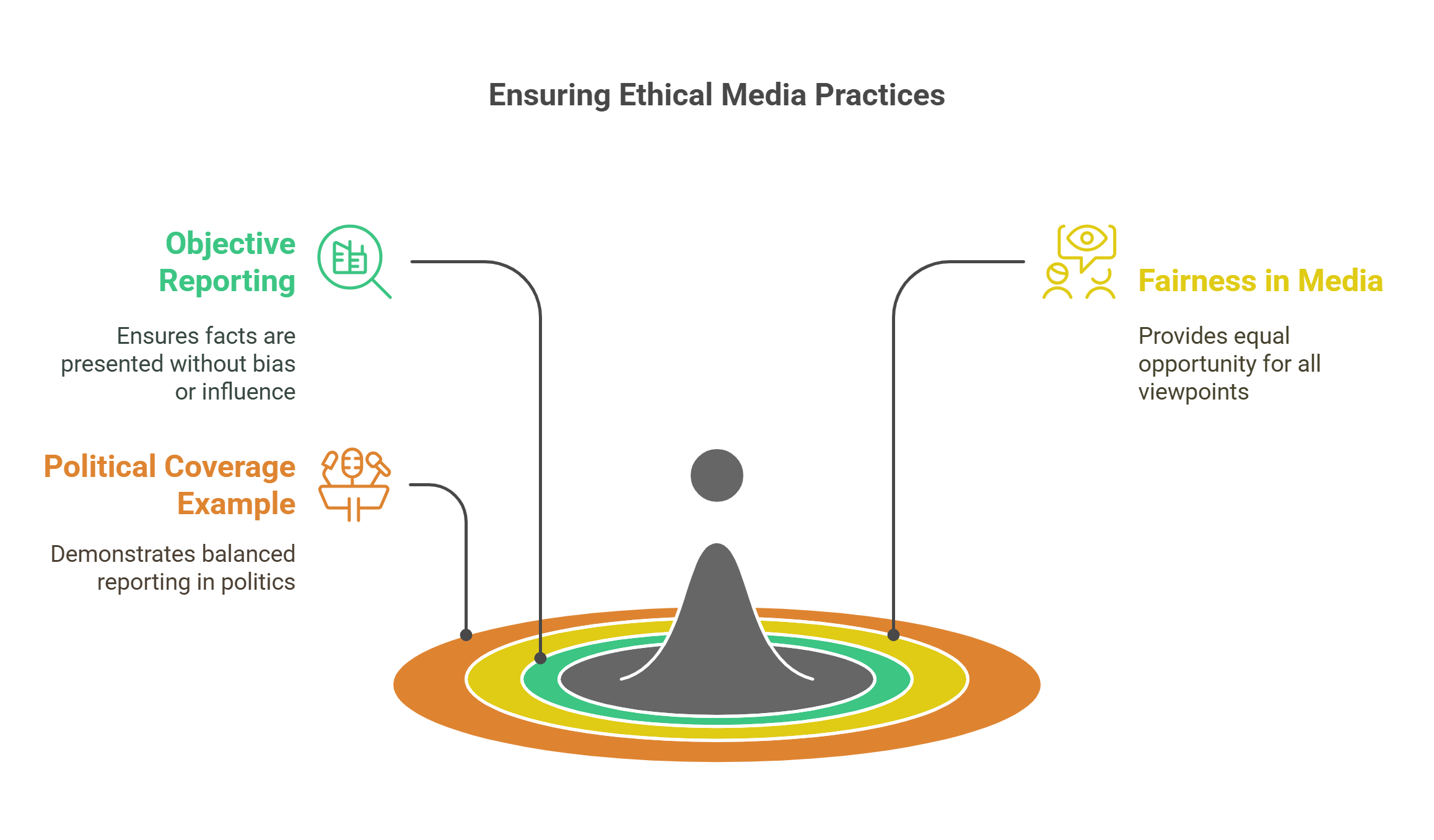
4. Challenges of Media Bias
Media bias refers to the perceived or real partiality in how news and information are reported. Bias can arise from individual, organizational, or systemic factors.
- Types of Bias:
- Political Bias: Favoring one political ideology over another.
- Corporate Bias: Influences from advertisers or media owners.
- Sensationalism: Overemphasizing dramatic aspects to attract attention.
- Impact:
- Erodes public trust in media.
- Distorts public discourse and decision-making.
📘 Example: Favorable coverage of corporate sponsors’ activities while downplaying criticisms.
Explained Simply: Media bias is like a skewed mirror that reflects only part of the truth.
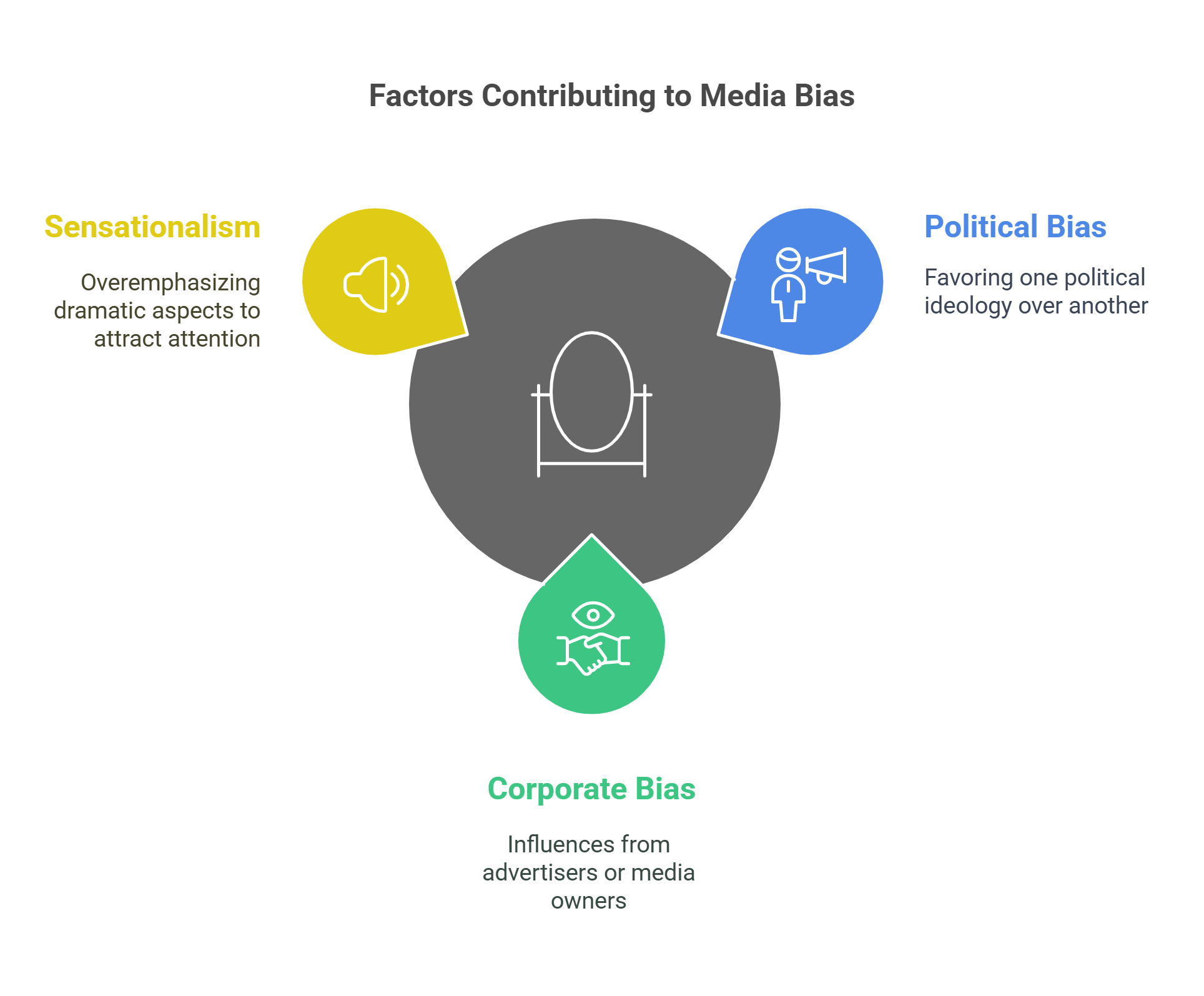
5. Privacy vs. Public Interest
Media professionals often face ethical dilemmas when balancing individual privacy with the public’s right to know.
- Privacy Concerns:
- Avoiding intrusion into private lives without justification.
- Protecting the identities of vulnerable individuals, such as crime victims.
- Public Interest:
- Publishing information that affects societal well-being or governance.
- Example: Investigating corruption or exposing public health hazards.
- Ethical Balance: Ensuring that the benefits of disclosure outweigh potential harm.
Explained Simply: Balancing privacy and public interest is like walking a tightrope, requiring careful judgment to avoid harm.
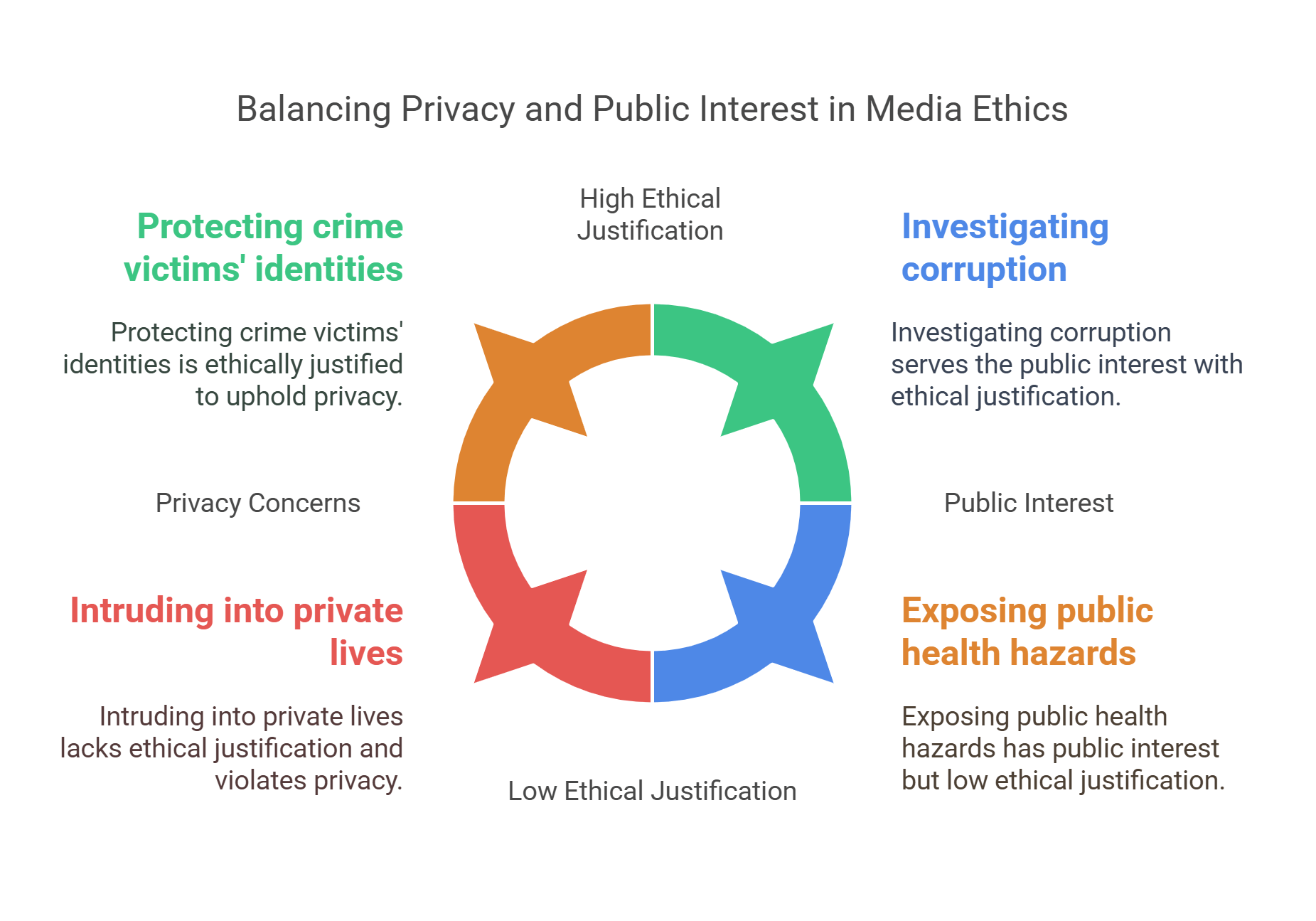
6. Ethical Advertising Practices
Advertising ethics ensure that promotional content respects truthfulness and societal values while avoiding exploitation and manipulation.
- Key Principles:
- Honesty: Avoid misleading claims about products or services.
- Responsibility: Refrain from promoting harmful stereotypes or unhealthy behaviors.
- Transparency: Clearly disclose paid partnerships and sponsored content.
- Examples:
- Ethical ads emphasize sustainable practices, such as eco-friendly products.
- Controversial: Ads that exaggerate health benefits, leading to consumer mistrust.
Explained Simply: Ethical advertising is like a handshake built on trust, ensuring consumers are informed rather than deceived.
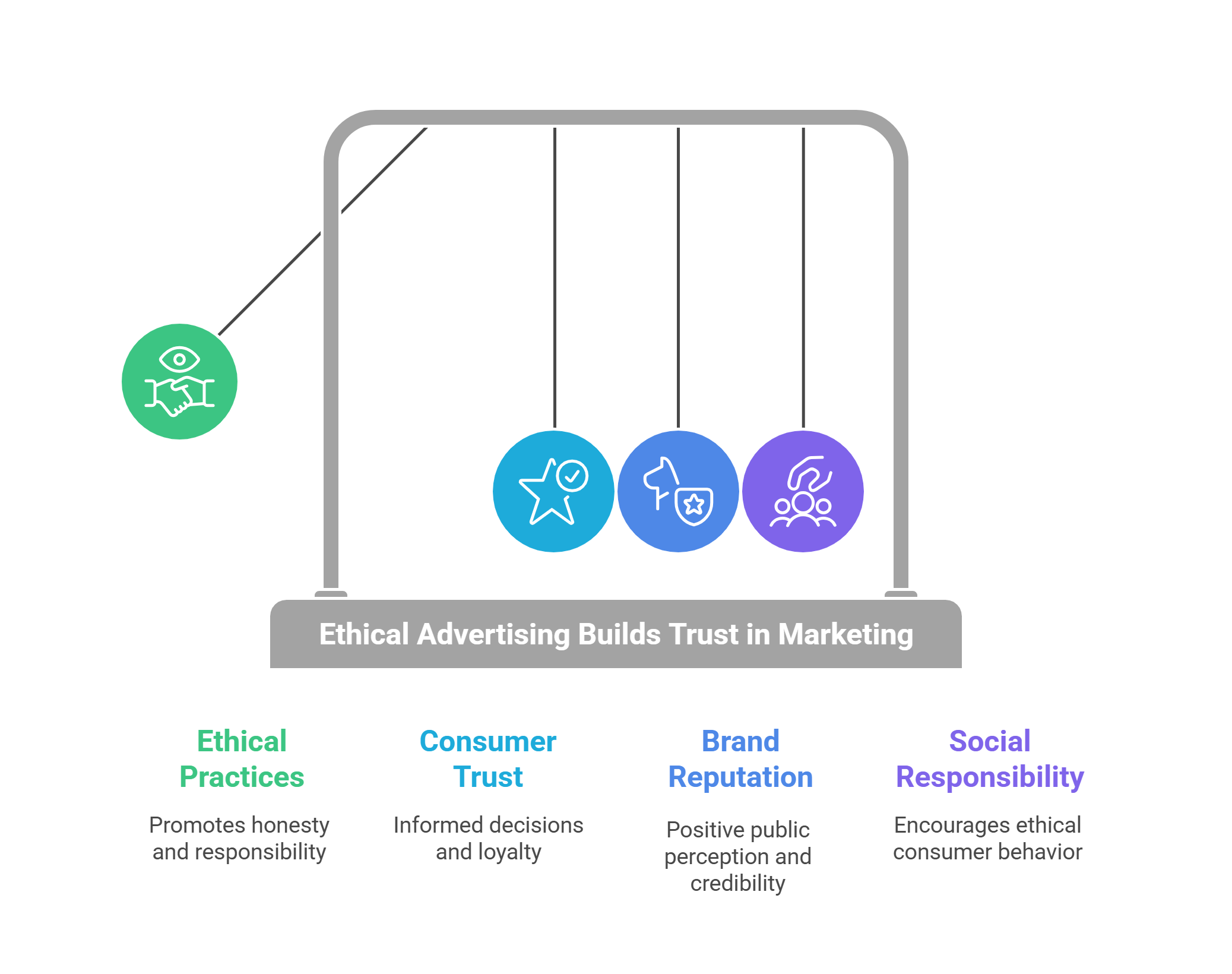
7. Digital Media and Ethics
The rise of digital media has introduced new ethical challenges, including misinformation, data privacy, and the influence of algorithms.
- Key Issues:
- Misinformation: Rapid sharing of unverified content.
- Privacy Concerns: Collection and misuse of personal data by platforms.
- Algorithmic Bias: Reinforcing stereotypes or echo chambers through curated content.
- Examples:
- Social media platforms implementing fact-checking to curb misinformation.
- Concerns over targeted ads based on invasive data tracking.
Explained Simply: Digital media ethics are like traffic rules for the online highway, ensuring a safe and fair experience for all users.
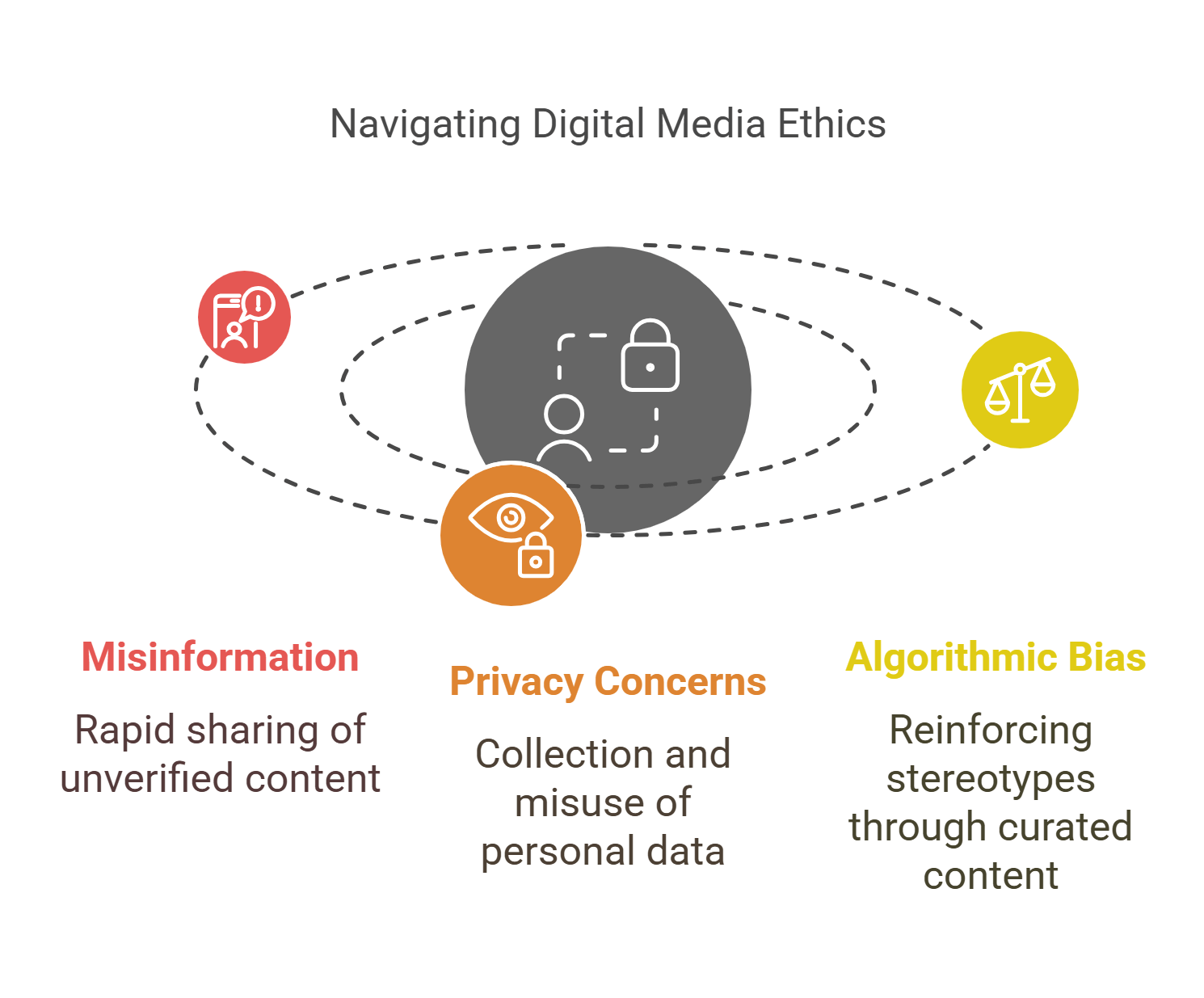
8. Censorship and Freedom of the Press
Balancing freedom of the press with societal values and security concerns is a recurring ethical challenge in media.
- Censorship:
- Suppressing content deemed harmful or controversial.
- Risks undermining democratic principles if misused.
- Freedom of the Press:
- Ensures the media’s role as a watchdog over those in power.
- Requires protection from undue influence or intimidation.
- Examples:
- Positive: Regulating hate speech to maintain societal harmony.
- Negative: Government censorship of dissenting opinions in authoritarian regimes.
Explained Simply: Censorship and press freedom are like a balancing act between protecting society and ensuring transparency.
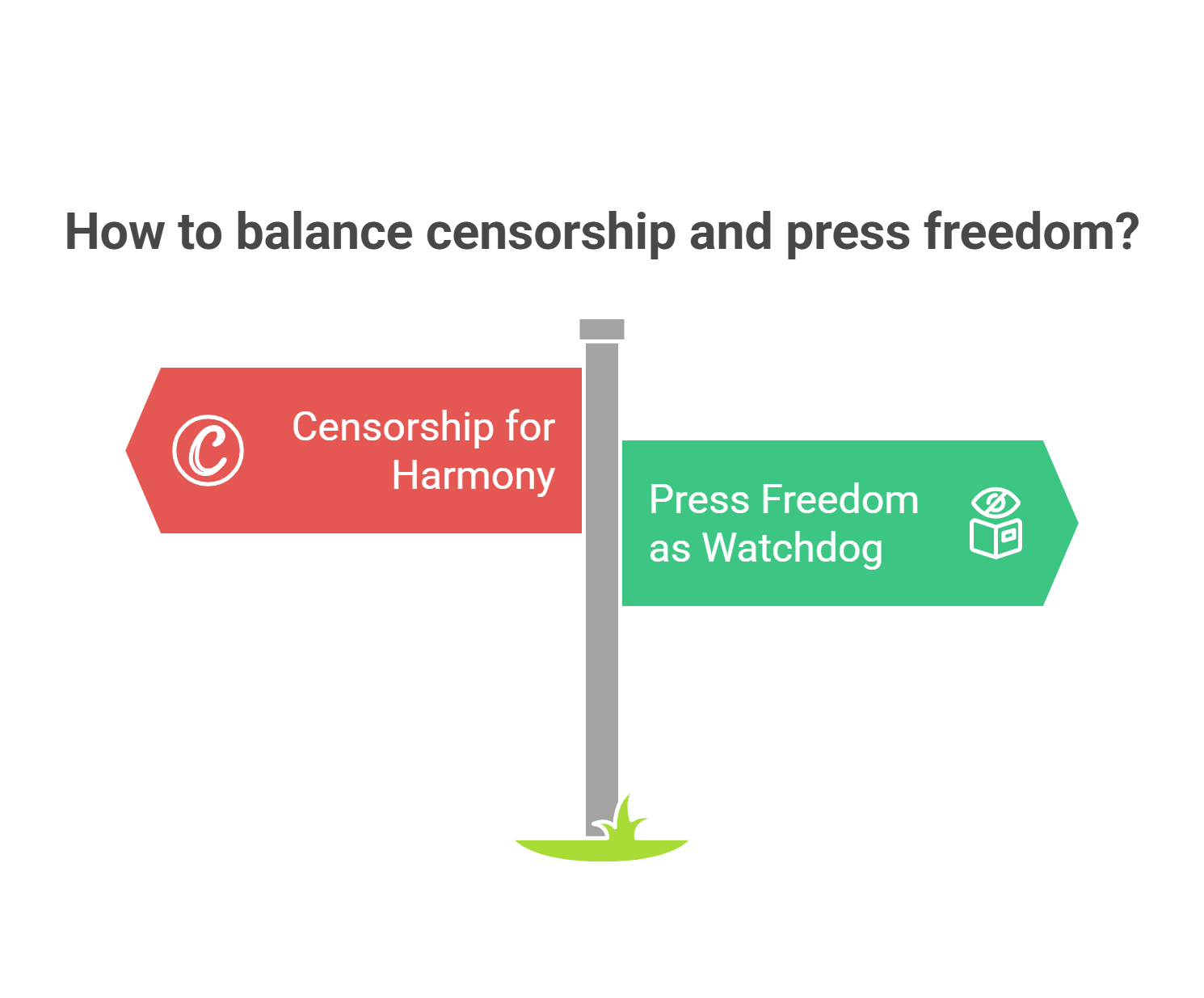
9. Ethical Dilemmas in Investigative Journalism
Investigative journalism often involves uncovering hidden truths, posing ethical questions about methods and consequences.
- Common Dilemmas:
- Using undercover techniques to gather information.
- Balancing public interest with potential harm to individuals.
- Examples:
- Positive: Exposing corporate corruption through whistleblowers.
- Negative: Publishing sensitive data that endangers lives or privacy.
- Ethical Guidelines:
- Minimize harm while prioritizing societal benefits.
- Seek informed consent when possible.
Explained Simply: Ethical investigative journalism is like navigating a maze, requiring careful steps to uncover truth responsibly.
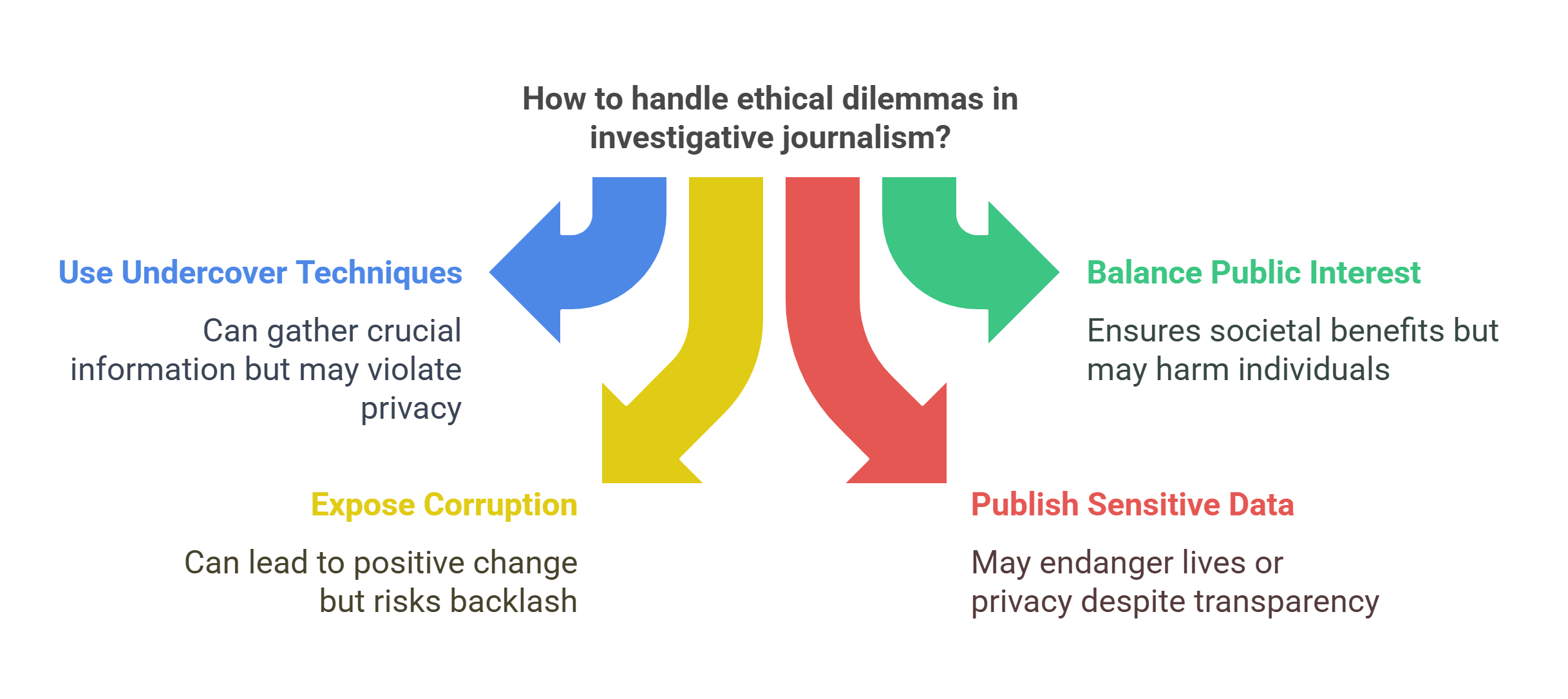
10. Media Accountability and Self-Regulation
Media accountability ensures that media organizations and professionals adhere to ethical standards through internal and external mechanisms.
- Self-Regulation:
- Codes of conduct and ombudsman roles within organizations.
- Example: News outlets issuing corrections for inaccuracies.
- External Regulation:
- Independent media watchdogs and regulatory bodies.
- Example: The Press Complaints Commission in the UK.
- Challenges:
- Balancing accountability with freedom of the press.
- Navigating conflicts of interest within regulatory bodies.
Explained Simply: Media accountability is like a mirror, reflecting ethical practices and ensuring transparency.
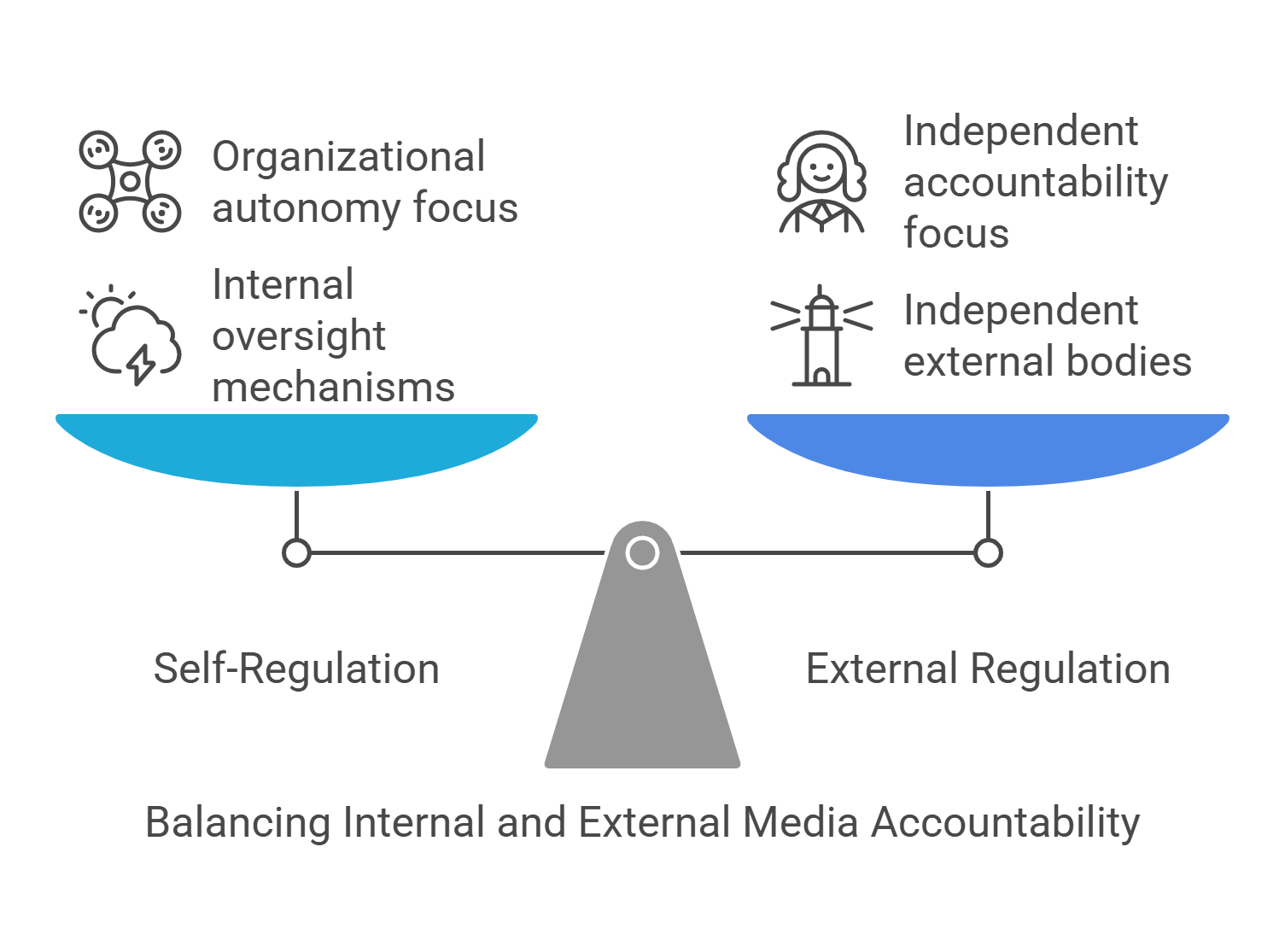
✨ Conclusion
Media ethics is the foundation of responsible communication in a rapidly evolving world. By upholding principles like transparency, fairness, and accountability, media professionals can navigate complex challenges while maintaining public trust. From digital media dilemmas to investigative journalism’s ethical puzzles, understanding these concepts helps readers critically assess the media’s role in shaping informed societies. Ethical media practices ensure that the public remains empowered with truthful, balanced, and impactful information.










